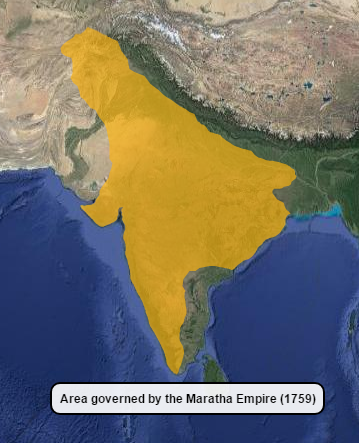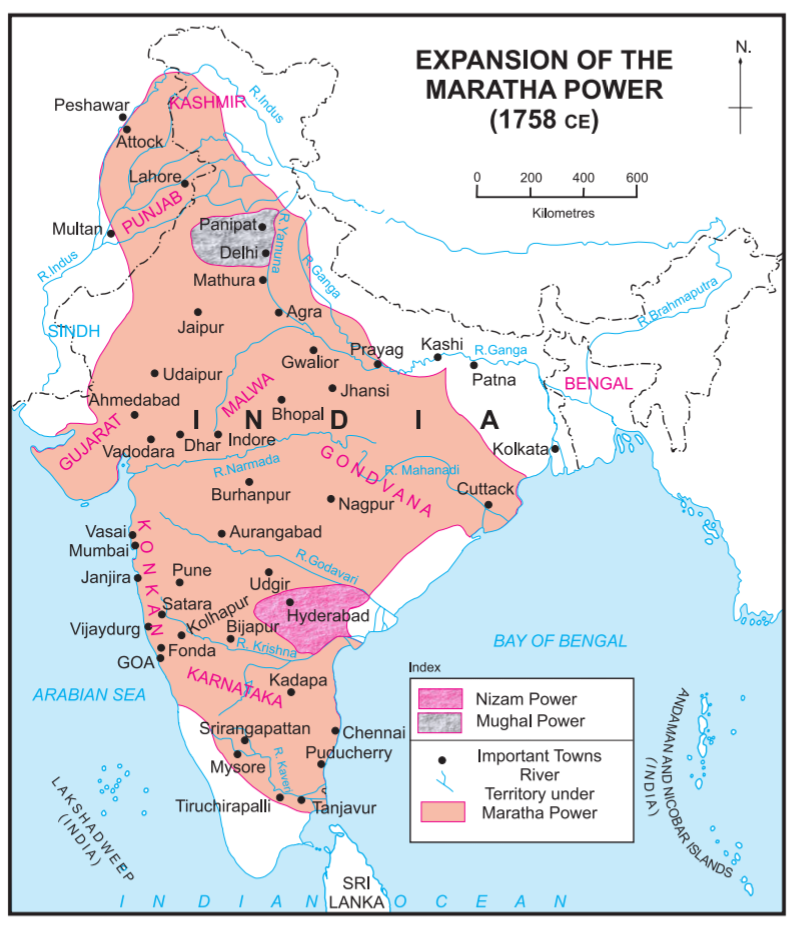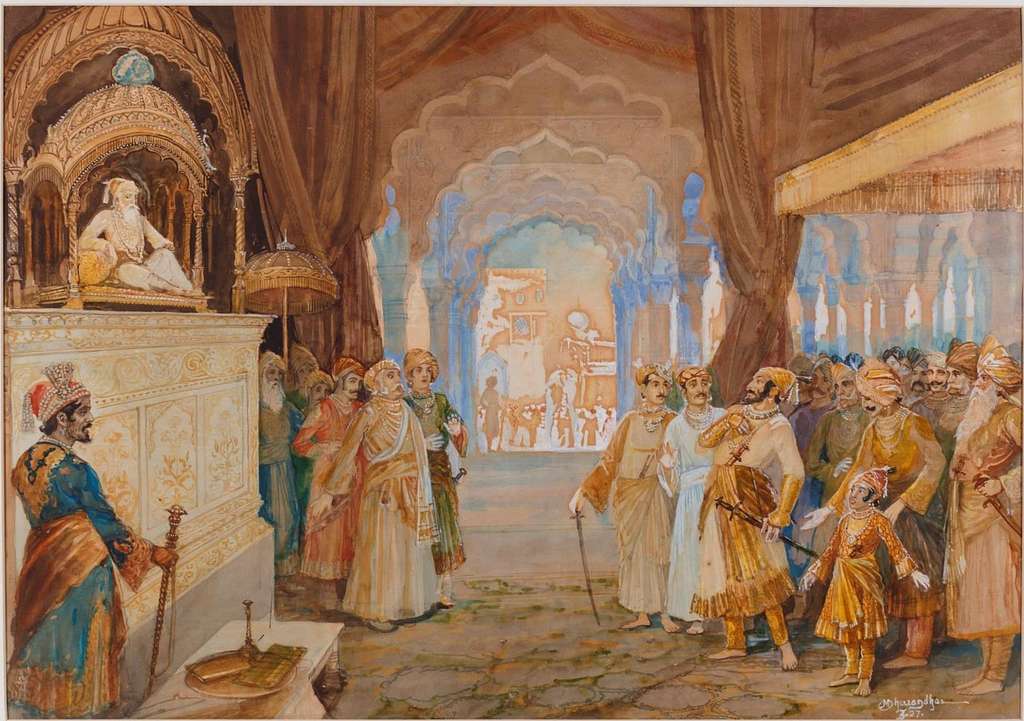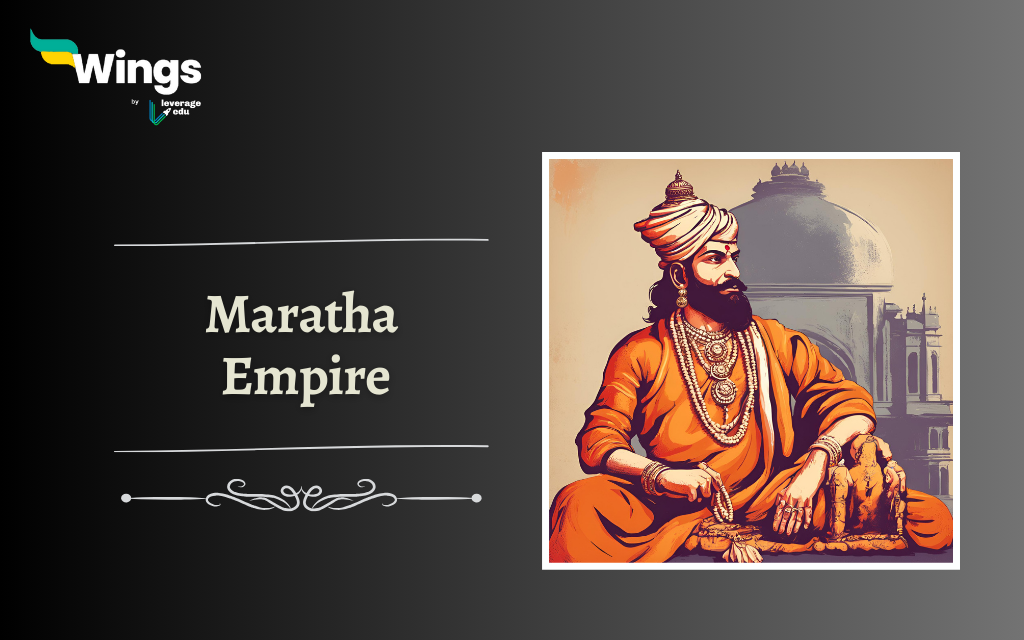Indian history consists of a chapter on the Maratha empire that gleams with historic wars, massive victories, and valour. Stretching across the 17th and 18th centuries, the empire not only left a mark on the annals of history but also transformed the political aspects. From the enduring legacy of courageous Shivaji to the imprisonment of Chhatrapati Shahu, this empire has witnessed it all. In this blog, we will delve into the history of the Maratha empire, important battles, prominent leaders, and more.
Contents
Origins of the Maratha Empire
The Maratha Empire, an early modern Indian empire, rose to prominence somewhere in the 17th century. The origins of the Maratha Empire can be linked to the numerous rebellions led by Chhatrapati Shivaji Maharaj. Based on the principle of Hindawi Swarjya, he raised his voice against the Mughal Empire as well as the Bijapur Sultanate with armed forces and expeditions. Shivaji wanted to free the nation from the cruel clutches of conflicts and discrimination.
After defending India from invasions led by the Mughals, Shivaji was crowned Chhatrapati in the year 1674. During the time around his death, Shivaji left the kingdom defended with numerous forts. Moreover, by the time of his grandson’s rule, the kingdom had expanded significantly and transformed into a glorious empire.
Shivaji was succeeded by his eldest son Sambhaji, also known as Shambhi Raje. He continued his father’s mission of Hind Swaraj and went on expanding the region of control under the empire.

Maratha Empire Wars
Here are a few important Maratha empire wars, etched forever in history.
First Anglo-Maratha War
- Upon the death of the third Peshwa Balaji Baji Rao, his son Madhavrao I succeeded and became the new Maratha ruler.
- He recovered some of the territories lost during the battle of Panipat. However, the English were aware of this growing power.
- As a result, when Madhavrao I died, his brother Narayanrao became the Peshwa. However, there were numerous internal rivalries between Narayanrao and Raghunathrao.
- Numerous treaties were signed including the Treaty of Salbai in 1782 which ended the first Anglo-Maratha war.
Second Anglo-Maratha War
- The second Anglo-Maratha war was fought between the Maratha Empire and the British East India Company.
- This clash happened between 1803 and 1805 and resulted in Peshwa Baji Rao II’s defeat by the head of Holkar.
- Most importantly, several treaties were signed such as the Treaty of Surji-Anjangaon, the Treaty of Rajghat, and the Treaty of Deogan.
Third Anglo-Maratha War
- After the second Anglo-Maratha war, the Marathas wanted to make one last attempt to regain what was lost.
- The chief reason for this war was the British conflict with the Pindaris. They suspected that the Marathas were extending their hospitality to Pindaris.
- Therefore, Maratha chiefs formed a front against the English.
- The war concluded with numerous treaties being signed along with Peshwa surrendering in 1818.

3 Important Maratha Leaders
Here are the three most prominent Maratha leaders:
Chhatrapati Shivaji
Shivaji Maharaj was born on February 19, 1630. He was succeeded by his eldest son Sambhaji, also known as Shambhu Raje, who in turn, continued the expansion policy. Chhatrapati Shivaji belonged to the Bhonsale Maratha family. Apart from establishing the Maratha empire, he was also one of the greatest soldiers of the nation. He possessed qualities like kindness, courage, honesty, determination, and chivalry. Moreover, he worshipped the Hindu goddess Bhawani and was a firm believer of the religion.
Sambhaji
Sambhaji was the elder son of Shivaji. At the time of his father’s demise, Sambhaji was kept as a prisoner in the Panhala fort. The nobles of Shivaji’s court wanted to crown Raja Ram as the king. Despite their efforts, Sambhaji was able to free himself from prison and capture the throne as well as Raigarh. Although he was popular among people, Sambhaji was also cruel and lacked political foresight.

During his battles with Aurangzeb, Sambhaji never lost any of his forts. He also fought the Eight Years’ War. However, in 1689, Sambhaji was attacked, imprisoned, and eventually killed by the Mughals. After Sambhaji’s demise, Aurangzeb imprisoned his family and occupied the capital of Raigad.
Chhatrapati Shahu
Chhatrapati Sahu was the son of Sambhaji. He and his mother Yesu Bai were imprisoned by Aurangzeb and remained imprisoned for seventeen and a half years. Chhatrapati Sahu was released from captivity only to cause internal conflicts and riots for the Maratha throne. As a result, Chhatrapati Sahu was able to defeat the supporters of Tara Bai at the battle of Khed.
Also Read – List of Maratha Rulers, History, Rise and Journey
Achievement of Notable Maratha Rulers
Here is an overview of the achievements of a few notable Maratha rulers.
| Ruler | Achievements |
| Chhatrapati Shivaji Maharaj | – Founder of the Maratha Empire. – He constructed the Raigarh Fort. – He plundered the Mughal port of Surat in 1664. |
| Sambhaji | He defeated the Portuguese and Chikka Deva Raya of Mysore. |
| Shahu | – The Maratha Empire expanded significantly. – He established the reign of Peshwas within the Maratha Empire. |
| Peshwa Baji Rao I | – He expanded the kingdom significantly. – He took control over Gujarat and Malwa in 1723. – He moved the Maratha Empire’s administrative center from Satara to Pune. – He founded four new kingdoms including the Gaekwads of Baroda, Holkars of Indore, Scindias of Gwalior, and Pawars of Dhar. |
Administration Under the Maratha Empire
There were four prominent types of administration during the Maratha Empire’s regime.
- Central administration: Shivaji appointed a group of 8 ministers, also known as Ashtapradhanm who were answerable to the emperor.
- Provincial administration: Shivaji’s kingdom was divided into numerous provinces which were further subdivided into Parganas and Tarafs. He divided conquered regions into provinces called prants and allotted subedar officials under a sarsubedar. Moreover, Shivaji asked state officials to collect taxes directly from ryots rather than relying on the traditional land revenue systems.
- Revenue administration: Interestingly, the revenue system of the Maratha Empire was based on Malik Amber’s Rod or Kathi system. Apart from this, the Chauthai or Chauth system was also instituted by Shivaji. It served as a type of military assistance in exchange for defending them from external threats. A 10% tax popularly known as Sardeshmukhi was also imposed. Additionally, local peasants were required to pay 40% of their total harvest.
- Military administration: Unlike other rulers, Shivaji used to give salary in cash form to his soldiers. Other members such as chieftains received payments known as Saranjam. Around forty thousand cavalry served in Silahdar’s troop, known as Paga. Shivaji was among the early people who recognized the need of a naval force. He constructed numerous dockyards and ships to increase his empire’s security.
The Decline of the Maratha Empire
A series of struggles for succession in the Maratha empire led to British invention by the East India Company. By extending their support in favor of a rival’s claim to the throne, the British forces asked for greater concessions from new rulers, thus weakening their empire more and more. To prevent and mitigate the possible destruction caused by blatant interference in their internal affairs, the Marathas got involved in a series of Anglo-Maratha wars.
The first, second, and third Anglo-Maratha wars were the last few attempts to regain sovereignty. Nana Sahib, the last Peshwa of the empire, was the adopted son of Peshwa Baji Rao II. He was among the most prominent Indian leaders during the revolt of 1857. Although the revolt was an unsuccessful attempt, he inspired thousands of others to struggle for the nation’s independence.

Legacy of the Maratha Empire
By now you must have understood that the history of the Maratha Empire in India is associated with numerous fundamental historical and political changes.
- The Maratha rulers were renowned for their religious tolerance and pluralism.
- The empire was successful in building powerful navy forces that protected it from maritime powers such as that of the British and Portuguese.
FAQs
The Maratha Empire dominated the Indian subcontinent during the 17th century. It came to an end in 1818 with the defeat of Peshwa Bajirao II during a battle with the British East India Company.
The greatest warrior of the Maratha Empire was Shivaji. It was under his leadership that the kingdom attained new heights.
The Maratha Empire or the Maratha Confederacy refers to a Hindu state in modern-day India. They believed in Hinduism and wanted to establish the religion and its beliefs throughout the subcontinent.
Related Blogs
That’s all about the Maratha Empire! If you want to read more articles like this, you can get Study notes on the Modern History of India here. Also, you can visit our general knowledge page on Indian History!
 One app for all your study abroad needs
One app for all your study abroad needs














